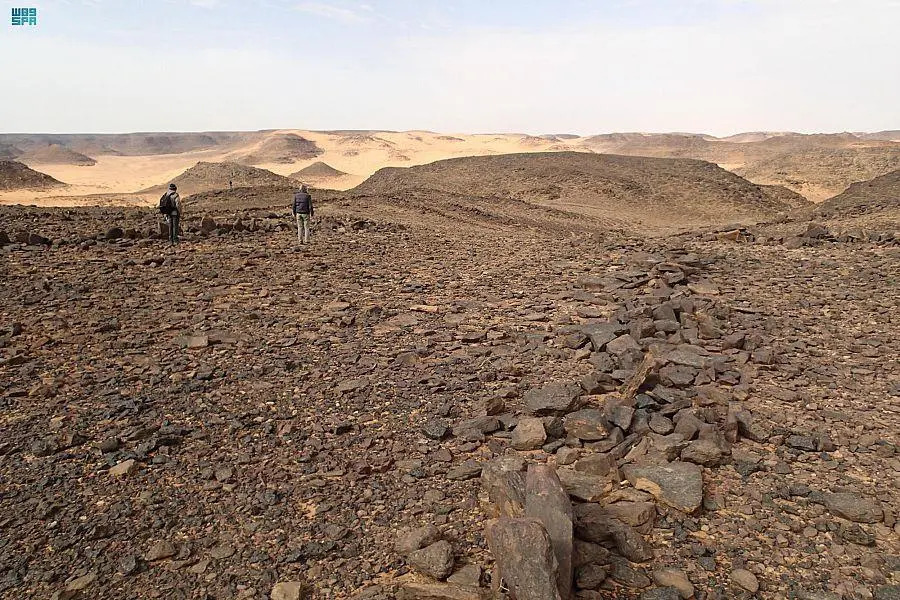Riyadh, Saudi Arabia — A team of Saudi and international archeologists has discovered ancient hand-made stone structures at Al-Dhulayat Mountain in Al-Jouf region in the north of the kingdom, dating back to about 8000-9000 years ago.
The discovery was part of an archeological survey conducted by the Heritage Commission in cooperation with the International Scientific Center.
Plus One Magazine on Wednesday published a scientific paper indicating that these stone structures were used as huge stone traps for animals that date back to the prehistoric period, reflecting the ability of ancient man to adapt to the nature of the place, SPA reported.
According to the paper, these stone traps were seen for the first time from airplanes during the 1920s and were thought to be sophisticated archaeological buildings consisting of walls and appendages of more than five kilometers in length that converge in a large area and are connected to them by rooms of smaller size. But their function and uses as traps for wild animals have not been proven until the past few years. More than 6,000 similar structures have been discovered so far.
Researchers from the National Center for Scientific Research and from different institutes published two paintings, which represent miniature plans for stone traps in the Kingdom and the neighboring regions. Two pairs of desert stone traps were found at Al-Dhulayat Mountain, where there is a small painting of a desert stone trap drawn on a stone that has been unearthed, dating back to about 8,000 years ago.
9000-year-old stone structures used as animal traps unearthed in Saudi

- The discovery was part of an archeological survey conducted by the Heritage Commission in cooperation with the International Scientific Center.
- Plus One Magazine on Wednesday published a scientific paper indicating that these stone structures were used as huge stone traps for animals that date back to the prehistoric era.







